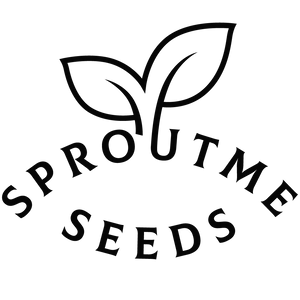Chives
Chives are flavorful, easy-to-grow herbs that add a mild onion flavor to a variety of dishes. Whether used fresh or dried, chives are a versatile addition to any herb garden, providing both culinary and ornamental value.
Preparing for Growing:
- Selecting a planting location: Choose a sunny spot for growing chives. They can tolerate partial shade but thrive in full sun.
- Soil preparation: Chives prefer well-draining soil rich in organic matter. Work compost or well-rotted manure into the soil before planting.
- Purchasing or preparing containers/pots: If growing chives in containers, choose pots with good drainage. Use a quality potting mix.
Starting from Seeds Indoors:
- Seed preparation: Chive seeds do not require any special treatment before planting.
- Choosing suitable pots/containers: Use shallow trays or small pots filled with seed starting mix.
- Sowing and caring for seeds indoors: Plant chive seeds thinly, covering them lightly with soil. Keep the soil moist and provide plenty of light. Seeds typically germinate within 7-14 days.
- Transplanting to larger containers if necessary: Once seedlings have several sets of true leaves, transplant them into larger containers or directly into the garden.
Starting from Seeds Outdoors:
- Soil preparation: Prepare the garden bed by loosening the soil and incorporating organic matter. Rake the soil smooth before planting.
- Selecting appropriate timing and method for outdoor sowing: Direct sow chive seeds outdoors in early spring after the last frost date or in late summer for fall harvest.
- Caring for seeds outdoors: Sow seeds thinly and cover lightly with soil. Keep the soil consistently moist until seedlings emerge.
Growing in Containers/Pots:
- Selecting suitable plants for containers: Chives are well-suited for container growing. Choose a compact variety and a container with ample drainage.
- Container and soil preparation: Use a well-draining potting mix and ensure containers have drainage holes. Place containers in a sunny location.
- Sowing or transplanting plants into containers: Plant chive seedlings or divide mature plants and transplant them into containers, spacing them 6-8 inches apart.
- Caring for container plants: Water container-grown chives regularly to keep the soil evenly moist. Fertilize lightly with a balanced fertilizer during the growing season.
Transplanting to Garden:
- Soil and planting site preparation: Choose a sunny location with well-draining soil. Prepare the planting area as described earlier.
- Correct timing and method for transplanting: Transplant chive seedlings into the garden after the danger of frost has passed. Space them 6-8 inches apart in rows spaced 12 inches apart.
- Post-transplant care: Keep the soil evenly moist, especially during hot weather. Mulch around plants to conserve moisture and suppress weeds.
Plant Care:
- Watering: Keep the soil consistently moist, especially during dry periods. Avoid overwatering, as chives prefer slightly dry soil to waterlogged conditions.
- Fertilizing: Chives generally do not require heavy fertilization. Side-dress with compost or a balanced fertilizer once or twice during the growing season.
- Weeding: Keep the area around chive plants free of weeds to reduce competition for nutrients and moisture.
- Pest and disease management: Chives are relatively pest and disease resistant. However, they may occasionally suffer from aphids or fungal diseases. Monitor plants regularly and use organic pest control methods as needed.
Harvesting:
- Determining when plants are ready for harvest: Harvest chives once they reach 6-8 inches in height. Use scissors to snip leaves as needed, leaving at least 2 inches of growth for regrowth.
- Harvesting and storage guidelines: Use freshly harvested chives immediately for the best flavor. Alternatively, store them in a plastic bag in the refrigerator for up to a week. Chives can also be dried or frozen for longer storage.
When to Start from Seeds by USDA Plant Hardiness Zones:
- Start chive seeds indoors 6-8 weeks before the last expected frost date in your area. Transplant seedlings outdoors after all danger of frost has passed.
Fast Facts:
- Planting depth: Surface sow seeds or plant seedlings at the same depth as they were growing in their containers.
- Seed spacing: Thinly scatter seeds or space seedlings 6-8 inches apart.
- Plant spacing: 6-8 inches apart in rows spaced 12 inches apart.
- Number of seeds per pot/container: Plant several seeds per pot and thin to the strongest seedling.
- Water preferences: Keep soil consistently moist, but not waterlogged.
- Sun preferences: Full sun to partial shade.
- Soil type and other important factors: Well-draining soil with a pH of 6.0-7.0.
-
Companion Planting: Chives are excellent companions for many garden vegetables and herbs. They repel pests such as aphids, carrot flies, and Japanese beetles, making them ideal companions for carrots, tomatoes, peppers, and roses. Additionally, their attractive purple flowers attract beneficial insects like bees and hoverflies, which help pollinate nearby plants.
- Temperature Preference: Chives prefer moderate temperatures and can tolerate light frosts. They thrive in temperatures between 60°F and 70°F (15°C to 21°C) but may bolt in hot weather. Providing afternoon shade during the hottest part of the day can help prevent bolting in warmer climates.
- Days to Germination: Chive seeds typically germinate within 7 to 14 days under optimal conditions. Maintain consistent moisture and warmth to encourage quicker germination.
- Days to Harvest: You can start harvesting chive leaves as soon as the plants reach 6 to 8 inches in height. Snip leaves as needed throughout the growing season, allowing the plants to continue producing fresh growth. Chives can be harvested continuously from spring until the first hard frost in fall.







